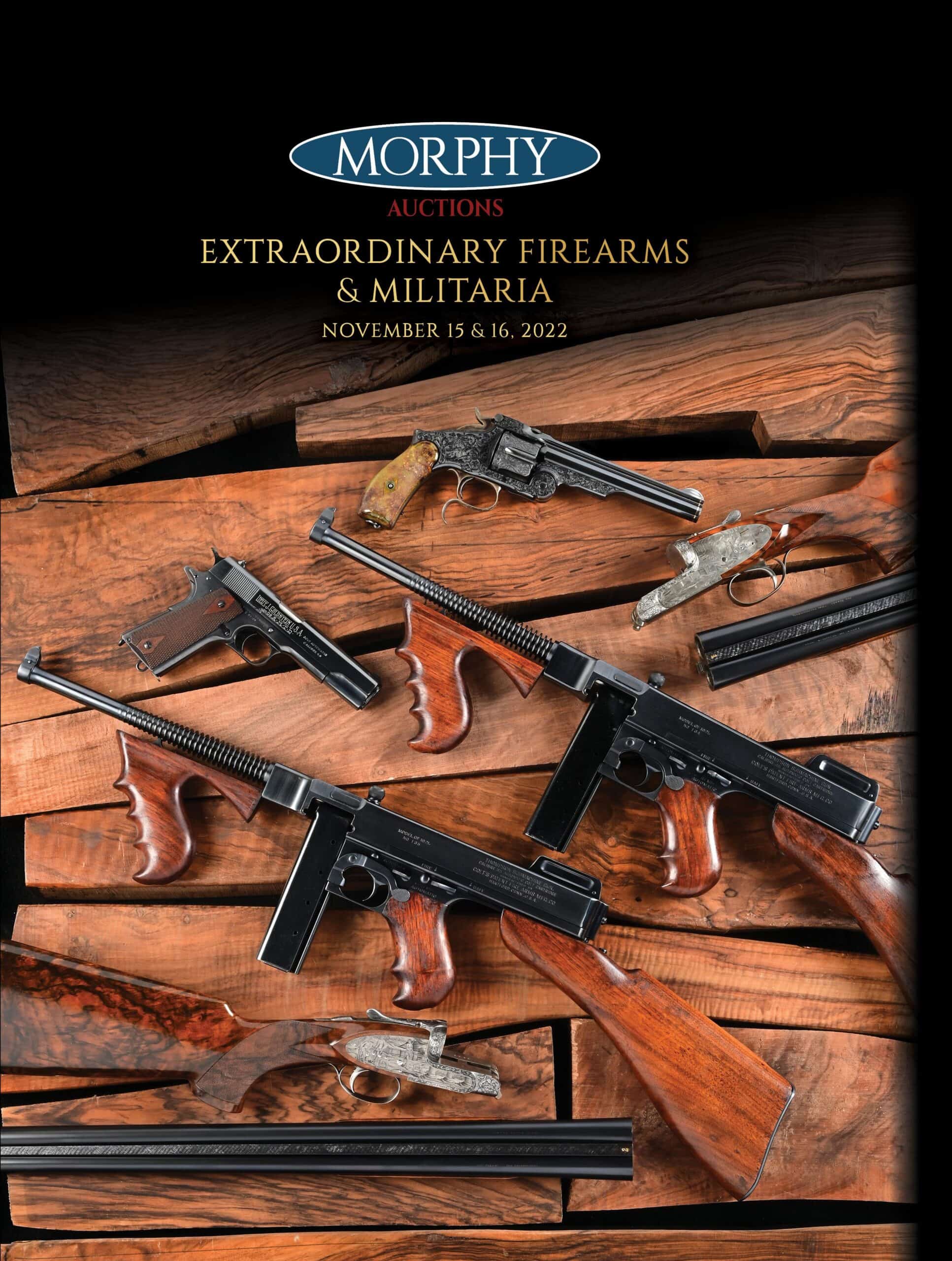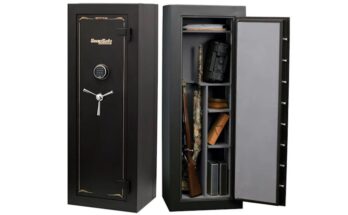Old guns turn brown due to rust and patina from oxidation over time. Prolonged exposure to air and moisture accelerates this process.
Old firearms often bear the distinct brown hue that speaks of their age and history. This discoloration is a form of corrosion that occurs when the metal reacts with oxygen in the presence of moisture. Such chemical reactions lead to rust and patina, which not only change the weapon’s color but can also affect its integrity and functionality.
Collectors and historians find value in this natural aging process, as it reflects the firearm’s journey through time. Preserving these weapons involves controlling environmental factors to slow down the oxidation process. Understanding the chemistry behind this color change is important for anyone interested in antique firearms, whether for collection purposes or educational endeavors. Regular maintenance and proper storage are key to protecting these pieces of history from the detrimental effects of corrosion.
The Science Of Patina On Antique Firearms
Within the realm of antique firearms, a distinctive brown color often graces their surfaces. This is not simply the result of aging, but a fascinating process called patination. The rich, warm hue of aged gun metal tells a story of history, chemistry, and interaction with the environment. Let’s explore the science behind the patina that develops on these historical treasures.
Chemical Reactions Leading To Patination
The most captivating transformation in an old gun is the development of patina. Patina is a thin layer that forms on the surface over time due to chemical reactions. These reactions involve metals like iron, copper, and sometimes silver.
- Oxidation: The primary reaction is oxidation, where metal reacts with oxygen, often facilitated by water.
- Corrosion: This interaction causes corrosion, which can lead to a brownish or greenish surface layer, depending on the metal composition.
- Sulfides: In some cases, sulfur compounds in the air can contribute, forming sulfides that add to the patina.
Impact Of Environmental Factors On Gun Metal
Factors like humidity, temperature, and air quality play significant roles in the patination process.
| Environmental Factor | Impact on Gun Metal |
|---|---|
| Humidity | Accelerates oxidation, promoting rust and patina. |
| Temperature | Fluctuations can speed up chemical reactions. |
| Air Quality | Pollutants like sulfur dioxide can increase corrosion. |
Protecting these firearms involves controlling exposure to such elements, which can slow down the patination process but never fully stop it. Collectors often value the patina on antique firearms, as it serves as a testament to their authenticity and age.

Credit: www.ebay.com
History Of Firearms And Aging
Old guns often turn brown, a process steeped in history and material science. This fascinating transformation isn’t just corrosion; it tells the story of the gun’s journey through time. Collectors prize the authentic aging of firearms as it reflects a weapon’s past. Let’s delve into the reasons why these instruments of history develop their distinctive, aged appearance.
Evolution Of Materials Used In Gun Making
Since their invention, guns have evolved significantly.
- Early firearms were typically made of wrought iron, prone to rust and corrosion.
- Later developments introduced steel, which was more durable but still susceptible to the elements.
- Modern firearms often use stainless steel and polymers, reducing the browning effect.
The change in materials reflects technological advancements. As gunsmiths sought to improve durability and performance, they influenced how these weapons age.
Historical Context Of Patina As A Marker Of Authenticity
The patina that aged guns acquire is a tell-tale sign of their authenticity.
| Period | Patinas Significance |
|---|---|
| Antiquity | Marks of resilience |
| Renaissance | Proof of age and value |
| Modern Day | Emblem of heritage and originality |
A brown patina does not just show aging; it is a certificate of a firearm’s journey and resilience. Collectors and historians alike value this natural aging process as it proves an item’s historical legitimacy without the need for modern authentication methods.
The Browning Process Explained
Let’s dive into The Browning Process Explained. Old guns have stories etched into their surfaces. One such tale is their color change. Over time, old guns develop a rich, brown patina. This isn’t just any change. It’s the story of metal meeting air, a natural chemistry show called the browning process. Now, let’s explain how this transformation happens and what it means for these historical artifacts.
Stages Of Oxidation In Ferrous Metals
The journey from shiny to brown for guns is all about oxidation. Like iron rusts, so does the metal in guns. This process happens in stages:
- Initiation: Oxygen meets iron. They react. A thin, invisible layer of rust starts.
- Propagation: More oxygen joins. The layer thickens. Visible rust appears.
- Termination: The process slows. A stable brown coating forms, protecting the metal underneath.
This natural armor is both a guardian and a storyteller of the gun’s legacy.
Comparison Between Natural And Artificial Browning Techniques
Guns can turn brown naturally over time or through man-made methods. Let’s compare the two:
| Technique | Process | Duration | Control |
|---|---|---|---|
| Natural Browning | Occurs over time with exposure to elements | Years to decades | Low |
| Artificial Browning | Chemical solutions used to speed up oxidation | Minutes to hours | High |
While natural browning has its charm and history, artificial browning allows for precision and quick results. Each method tells a different story, adding layers of depth to the weapon’s appearance and significance.
Conservation Measures For Old Firearms
Firearms are not only tools of historical significance but also works of art. Preserving their condition requires meticulous care. A rifle’s brown patina tells a story of its age and use. In this section, we will delve into essential conservation measures ensuring these historical pieces retain their character while preventing further deterioration.
Best Practices In Preserving Patina
Preserving the original patina of old guns is crucial. Below are the best practices to maintain their authenticity:
- Clean with a soft, dry cloth to remove surface dirt.
- Avoid harsh chemicals that could strip the patina.
- Use oil specifically designed for firearms to protect from moisture.
- Regular inspections help catch issues early.
- Store in a humidity-controlled environment.
When To Interfere With The Browning Process
At times, intervening in the browning process is necessary:
- When corrosion risk is high, action is needed to prevent damage.
- If active rust is present, professional removal is essential.
- Consider conservators for significant historical pieces.
- Deal with mechanical issues promptly without affecting the patina.
Remember, any interference should aim to preserve the firearm’s history. Choosing to remove the patina can decrease the value and integrity of the gun. Consult experts if you’re unsure about the right approach.
The Cultural Significance Of Patina
Have you ever wondered why old guns have that distinctive brown color? This color, often called patina, is more than just an aesthetic feature. It’s a marker of history, a signature of age that carries deep cultural significance in the world of firearms. When a gun turns brown, it’s not just a sign of aging; it’s a storied cloak that whispers tales of where it has been and what it has seen.
Perceptions Of Aging In Firearms
Over time, guns go through a natural process of aging. Exposure to the elements, such as air and moisture, leads to oxidation. This process gives firearms a unique brown hue, typically seen on older models.
- Aging marks authenticity.
- Brown color signifies historical significance.
- Each mark and coloration tells a unique story.
Collectors and enthusiasts often prefer firearms that have naturally aged, as they represent truthful pieces of history. The browning of a gun is not seen as detrimental but as an addition to its character and value.
The Allure Of Patina To Collectors And Historians
For collectors and historians, patina is not simply corrosion; it is a cherished feature. A browned gun holds immense allure due to its patina, being the focus of many collections.
- Patina suggests a story of survival.
- It hints at decades or even centuries of history.
- Aesthetics of patina often trump those of newer-looking guns.
Patina adds to the authenticity and value of firearms, making each piece not just a weapon, but a window into the past. This aged appearance is a badge of honor, a testament to the longevity and the journey of the firearm throughout different eras.

Credit: www.reddit.com

Credit: issuu.com
Frequently Asked Questions On Why Do Old Guns Turn Brown?
What Causes Old Firearms To Discolor?
Old firearms discolor mainly due to oxidation. The steel reacts with moisture and oxygen over time, forming rust. This rust can give the gun a brown patina, especially if it’s been exposed to the elements without proper maintenance or protection.
How Can I Prevent My Antique Gun From Browning?
To prevent browning, keep your antique gun dry and well-lubricated. Store it in a controlled environment with low humidity. Use oil specifically designed for firearms to create a protective barrier against moisture and rust.
Does Gun Browning Affect The Value?
Yes, browning can affect a gun’s value. Collectors often seek well-preserved pieces, so significant browning can lower desirability. However, a uniform patina may add to the authenticity and historical value for certain collectors.
Can Browning On Old Guns Be Removed?
Browning can be partially removed using a gun-specific rust remover or a fine abrasive. However, care must be taken to avoid damaging the gun’s original finish. Professional restoration is recommended for valuable or antique firearms.
Conclusion
Understanding the browning of old firearms unravels a tale of metal’s battle with the environment. This natural phenomenon stems from the interplay of metal’s susceptibility to oxidization and external conditions. Proper care and storage can mitigate the process, preserving the legacy of historical weaponry for the curious minds of future generations.
To keep history in hand, attention to maintenance remains key.



